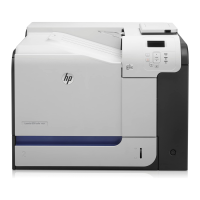FUP Overview
File Utility Program (FUP) Reference Manual—523323-014
1-8
Specifying Files
Specifying Files
FUP commands make it easy to:
Create, display, and duplicate files
Load data into files
Alter file characteristics
Purge files
Before you use FUP to create or manage files, become familiar with the various file
types and the methods used to specify them.
The different types of files in the Guardian environment include disk files (containing
data, code, or text), nondisk devices (terminals, printers, or tape drives), spooler files
(code 129), and processes (programs that are running). Disk file names have four
parts: node, volume, subvolume, and file identifier. The names of nondisk devices and
processes must begin with a dollar sign ($), followed by one to five alphanumeric
characters (and additional qualifiers if applicable).
Three common syntax terms appear throughout the FUP commands. Each of these
terms provides a way to specify the file or files you want to affect with a FUP
command. The syntax terms are:
listfile
fileset-list
fileset
Listfile Parameter
The listfile parameter refers to a nondisk device, a process, an existing disk file,
or a spooler file (code 129) to which you direct the output of a FUP command. It always
appears with the OUT keyword in the syntax descriptions for the TACL RUN command
and in the FILENAMES, FILES, HELP, INFO, LISTLOCKS, LISTOPENS, RELOAD,
SHOW, STATUS, SUBVOLS, SUSPEND, and VOLS commands for FUP.
If you omit this option, FUP uses the OUT list file that is in effect for the current TACL
process—usually the home terminal.
Note. For more information on the different types of Enscribe-structured files, see the Enscribe
Programmer’s Guide.
Note. For more information on file-naming conventions, see the Guardian User’s Guide .
Note. For information on when FUP commands do not apply to SQL files, see the command
descriptions in Section 2, FUP Commands
.
